Content
B Background
B.1 Complex Numbers
B.2 Sinusoids
B.3 Sketching Signals
B.4 Cramer's Rule
B.5 Partial fraction expansion
B.6 Vectors and Matrices
B.7 Miscellaneous
1 Introduction to Signals and Systems
1.1 Size o f a Signal
1.2 Classification of Signals
1.3 Some Useful Signal Operations
1.4 Some Useful Signal models
1.5 Even a nd Odd Functions
1.6 Systems
1.7 Classification of Systems
1.8 System Model: Input-output Description
1.9 Summary
2 Time-Domain Analysis of Continuous-Time Systems
2.1 Introduction
2.2 System Response to Internal Conditions: Zero-Input response
2.3 T he Unit Impulse response h(t)
2.4 System Response to External Input: Zero-State Response
2.5 Classical Solution of Differential equations
2.6 System Stability
2.7 Intuitive Insights into System Behavior
2.8 Appendix 2.1: Determining The Impulse Response
2.9 Summary
3 Signal Representation By Fourier Series
3.1 Signals and Vectors
3.2 Signal Comparison: Correlation
3.3 Signal Representation by Orthogonal Signal Set
3.4 Trigonometric Fourier Series
3.5 Exponential Fourier Series
3.6 Numerical Computation of Dn
3.7 LTIC System response to Periodic Inputs
3.8 Appendix
3.9 Summary
4 Continuous-Time Signal Analysis: The Fourier Transform
4.1 Aperiodic Signal Representation By Fourier Integral
4.2 Transform of Some Useful Functions
4.3 Some Properties of the Fourier Transform
4.4 Signal Transmission Through LTIC Systems
4.5 Ideal and Practical Filters
4.6 Signal Energy
4.7 Application to Communications: Amplitude Modulation
4.8 Angle Modulation
4.9 Data Truncation: Window Functions
4.10 Summary
5 Sampling
5.1 The Sampling Theorem
5.2 Numerical Computation of Fourier Transform: The Discrete Fourier Transform (DFT)
5.3 The Fast Fourier Transform (FFT)
5.4 Appendix 5.1
5.5 Summary
6 Continuous-Time System Analysis Using the Laplace Transform
6.1 The Laplace Transform
6.2 Some Properties of the Laplace Transform
6.3 Solution of Differential and Integro-Differential Equations 390 6.4 Analysis of Electrical Networks: The Transformed Network
6.5 Block Diagrams
6.6 System Realization
6.7 Application to Feedback and Controls
6.8 The Bilateral Laplace Transform
6.9 Appendix 6.1: Second Canonical Realization
6.10 Summary
7 Frequency Response and Analog Filters
7.1 Frequency Response of an LTIC System
7.2 Bode Plots
7.3 Control System design Using Frequency Response
7.4 Filter Design by Placement of Poles and Zeros of H(s)
7.5 Butterworth Filters
7.6 Chebyshev Filters
7.7 Frequency Transformations
7.8 Filters to Satisfy Distortionless Transmission Conditions
7.9 Summary
8 Discrete-Time Signals and Systems
8.1 Introduction
8.2 Some Useful Discrete-T ime Signal Models
8.3 Sampling Continuous-Time Sinusoids and Aliasing
8.4 Useful Signal Operations
8.5 Examples of Discrete-Time Systems
8.6 Summary
9 Time-Domain Analysis of Discrete-Time Systems
9.1 Discrete-T ime System Equations
9.2 System Response to Internal Conditions: Zero-Input Response
9.3 Unit Impulse Response h[k]
9.4 System Response to External Input: Zero-State Response
9.5 Classical solution of Linear Difference Equations
9.6 System Stability
9.7 Appendix 9.1: Determining Impulse Response
9.8 Summary
10 Fourier Analysis of Discrete-Time Signals
10.1 Periodic Signal Representation by Discrete-Time Fourier Series
10.2 Aperiodic Signal Representation by Fourier Integral
10.3 Properties of DTFT
10.4 DTFT Connection With the Continuous-Time Fourier transform
10.5 Discrete-Time Linear System analysis by DTFT
10.6 Signal Processing Using DFT and FFT
10.7 Generalization of DTFT to the Z-Transform
10.8 Summary
11 Discrete-Time System Analysis Using the z-Transform
11.1 The Z-Transform
11.2 Some Properties of the Z-Transform
11.3 Z-Transform Solution of Linear Difference Equations
11.4 System Realization
11.5 Connection Between the Laplace and the Z-Transform
11.6 Sampled-Data ( Hybrid) Systems
11.7 The Bilateral Z-Transform
11.8 Summary
12 Frequency Response and Digital Filters
12.1 Frequency Response of Discrete-Time Systems
12.2 Frequency Response From Pole-Zero Location
12.3 Digital Filters
12.4 Filter Design Criteria
12.5 Recursive Filter Design: The Impulse Invariance Method
12.6 Recursive Filter Design: T he Bilinear Transformation Method
12.7 Nonrecursive Filters
12.8 Nonrecursive Filter Design
12.9 Summary
13 State-Space Analysis
13.1 Introduction
13.2 Systematic Procedure for Determining State Equations
13.3 Solution of State Equations
13.4 Linear Transformation of State Vector
13.5 Controllability and Observability
13.6 State-Space Analysis of Discrete-Time Systems
13.7 Summary
Answers to Selected Problems
Supplementary Reading
Index
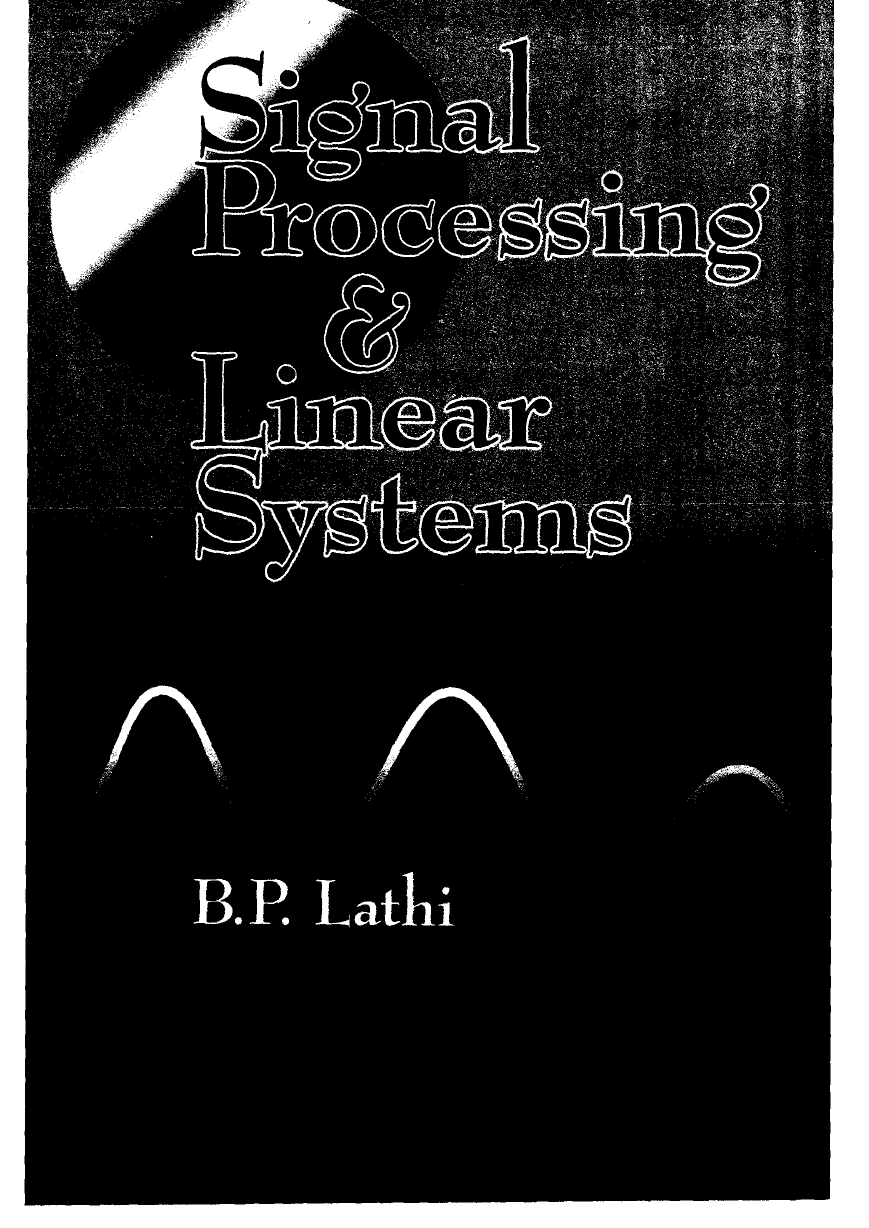

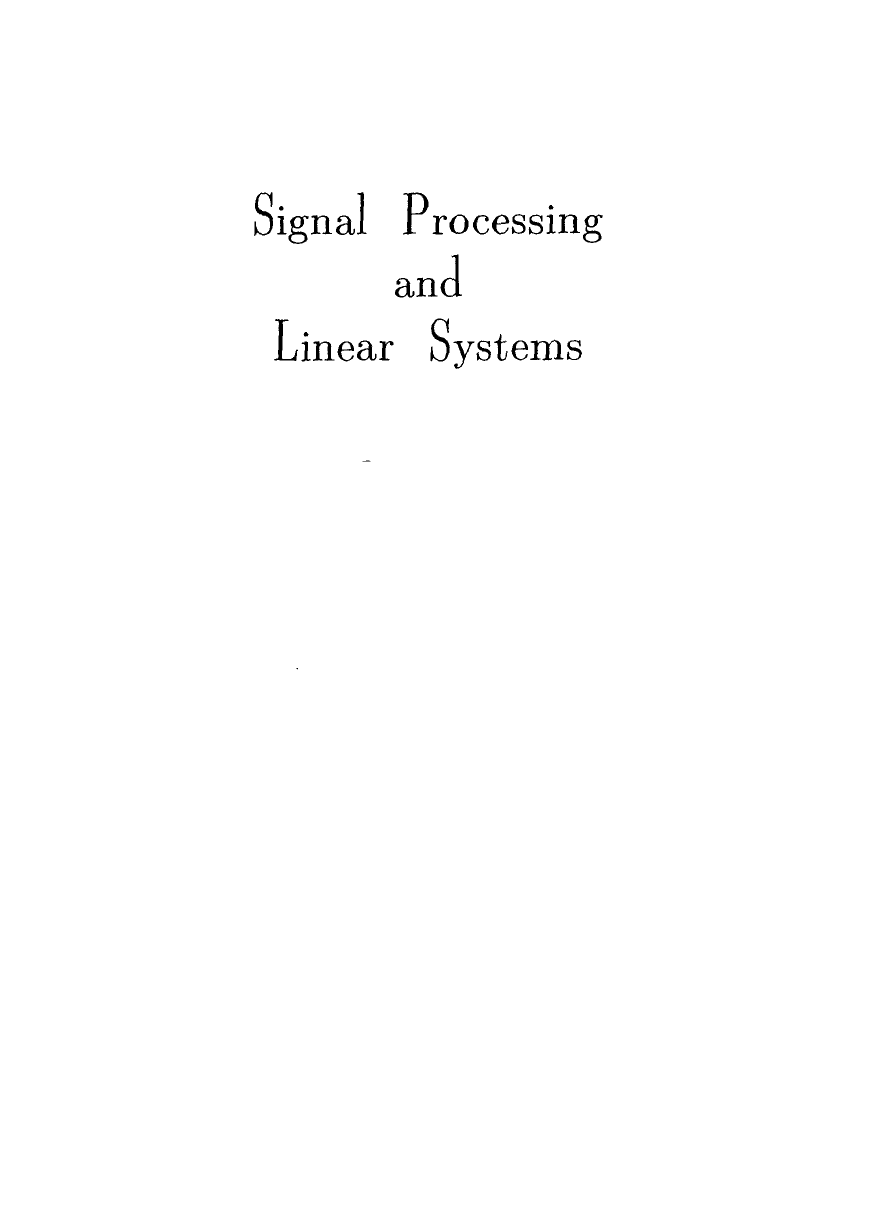

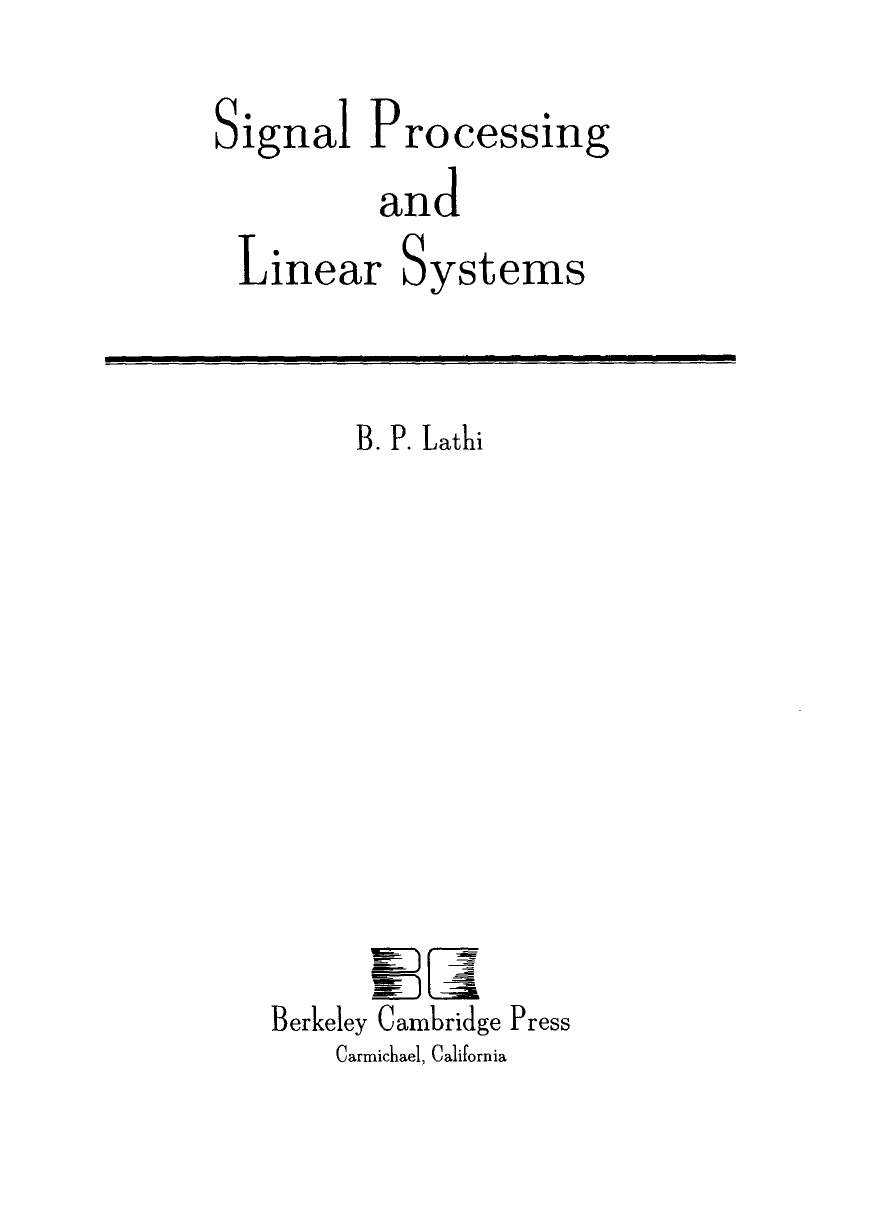
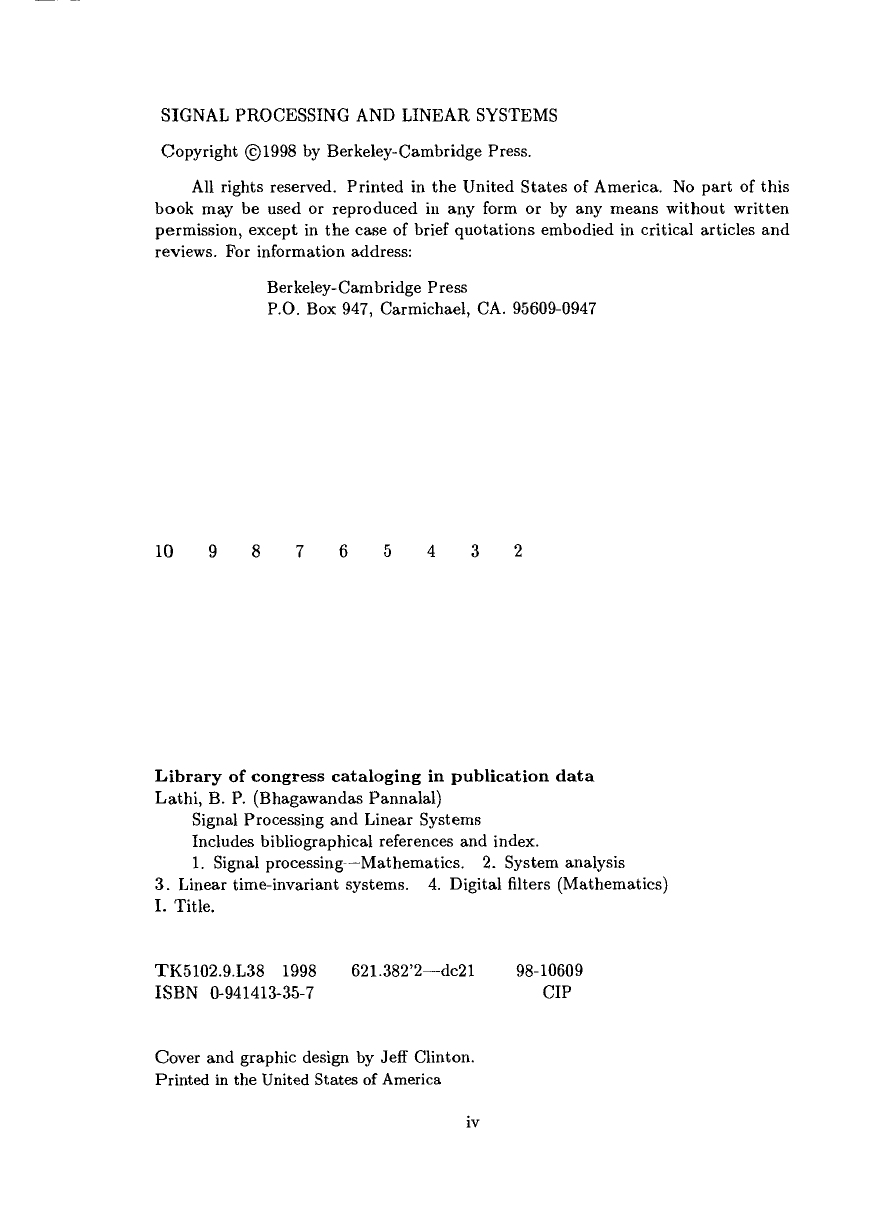
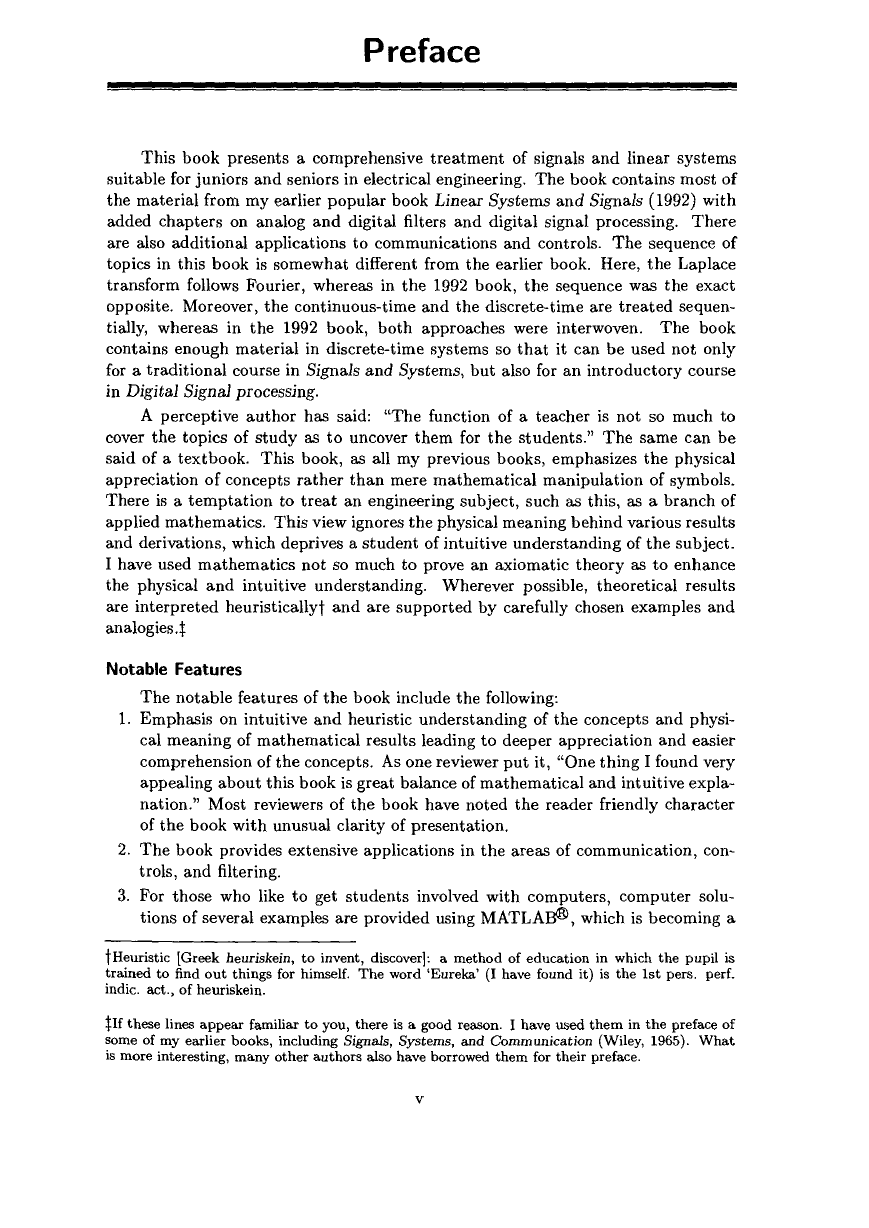
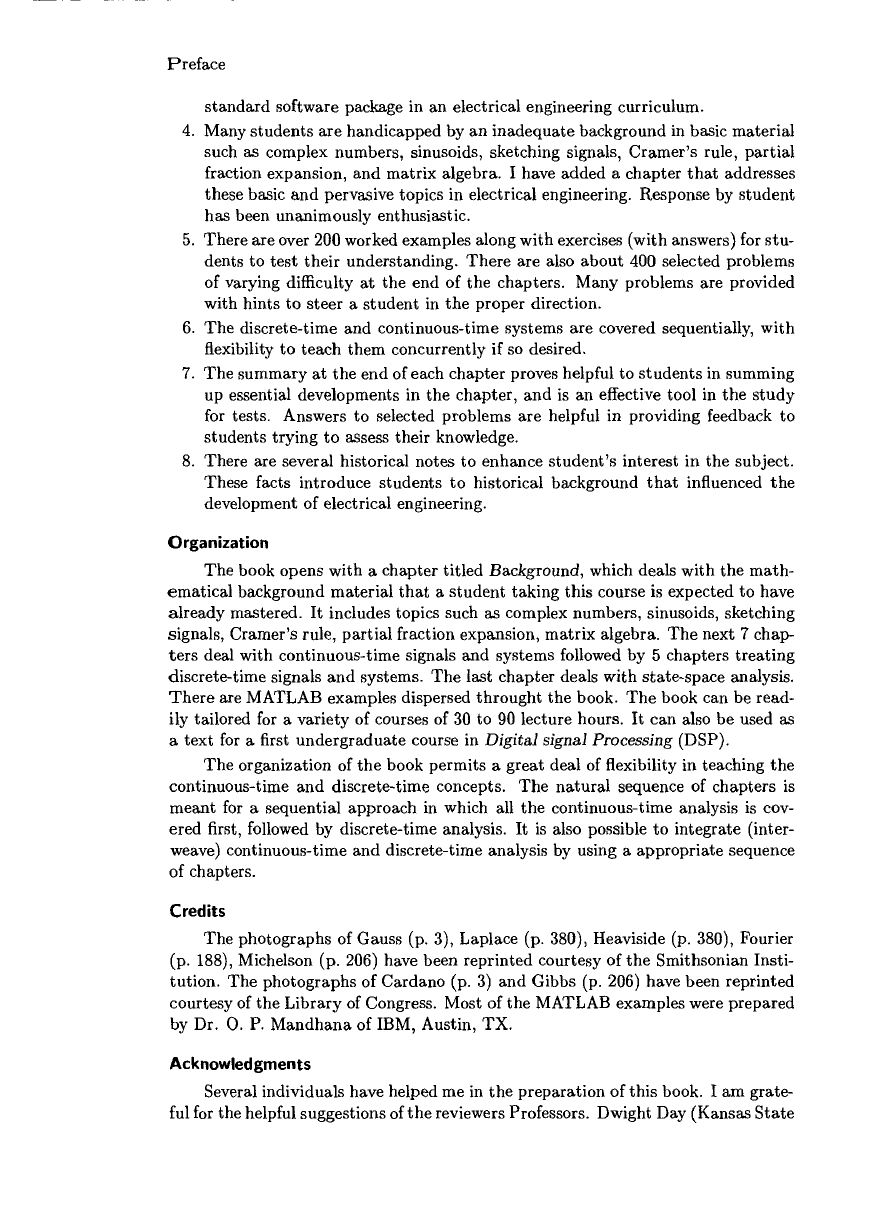








 2023年江西萍乡中考道德与法治真题及答案.doc
2023年江西萍乡中考道德与法治真题及答案.doc 2012年重庆南川中考生物真题及答案.doc
2012年重庆南川中考生物真题及答案.doc 2013年江西师范大学地理学综合及文艺理论基础考研真题.doc
2013年江西师范大学地理学综合及文艺理论基础考研真题.doc 2020年四川甘孜小升初语文真题及答案I卷.doc
2020年四川甘孜小升初语文真题及答案I卷.doc 2020年注册岩土工程师专业基础考试真题及答案.doc
2020年注册岩土工程师专业基础考试真题及答案.doc 2023-2024学年福建省厦门市九年级上学期数学月考试题及答案.doc
2023-2024学年福建省厦门市九年级上学期数学月考试题及答案.doc 2021-2022学年辽宁省沈阳市大东区九年级上学期语文期末试题及答案.doc
2021-2022学年辽宁省沈阳市大东区九年级上学期语文期末试题及答案.doc 2022-2023学年北京东城区初三第一学期物理期末试卷及答案.doc
2022-2023学年北京东城区初三第一学期物理期末试卷及答案.doc 2018上半年江西教师资格初中地理学科知识与教学能力真题及答案.doc
2018上半年江西教师资格初中地理学科知识与教学能力真题及答案.doc 2012年河北国家公务员申论考试真题及答案-省级.doc
2012年河北国家公务员申论考试真题及答案-省级.doc 2020-2021学年江苏省扬州市江都区邵樊片九年级上学期数学第一次质量检测试题及答案.doc
2020-2021学年江苏省扬州市江都区邵樊片九年级上学期数学第一次质量检测试题及答案.doc 2022下半年黑龙江教师资格证中学综合素质真题及答案.doc
2022下半年黑龙江教师资格证中学综合素质真题及答案.doc